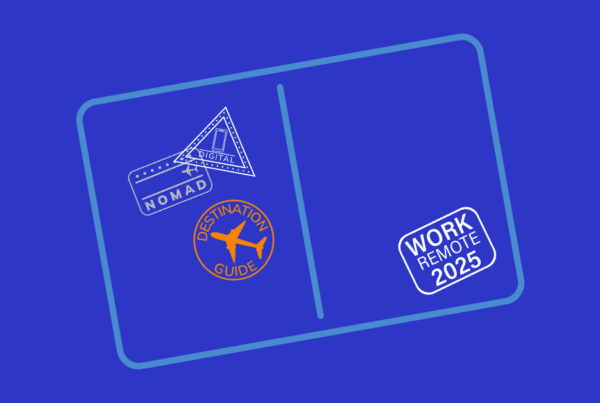
A lot of workers were forced outside their comfort zones when most of the world went remote in April 2020.
Prior to the COVID-19 pandemic, roughly three-quarters of workers had never conducted their job duties from home.
So, when one-third of the workforce had to go remote for reasons beyond their control, there was a significant learning curve. For workers that had a comfortable office set-up with supplies and resources, it was difficult to recreate that environment at home. A few months in, however, the world learned remote working was less intimidating than originally suspected. Employees were given the flexibility to build their day around how they work best and the majority found the autonomy freeing.
Enough time has gone by where workers are in a remote groove and have gotten used to a job structure that fits their lifestyles. Work is now being built around the employee and companies that try to reverse that have a harsh reality on the horizon. Harvard surveys from summer 2021 found 40 percent of respondents would quit their jobs immediately if forced back to the office full time.
As the world heads into three years of living with COVID, many organizations are still prioritizing their employees’ health and safety the way they did when the pandemic broke out. And with new virus variants fueling even more uncertainty, fall and winter plans of going back into the office have been thwarted. So, with the current situation being indefinite, it’s important to make the best of it.
For workers that are new to the remote lifestyle, the learning curve is real and it can take some time to discover best practices and get into a groove. But when they get into the groove, they discover new opportunities and possibilities. Here are three of the most important things you need to start seeing remote success.
Self-awareness
Remote workers have an incredible opportunity to work with their brain, not against it. For many, the past two years have allowed for self-exploration within their careers. Workers in a traditional office environment have long had to wrap their working style around the organization’s culture and procedures. Not anymore.
When a chunk of the workforce went remote in March 2020, there was a learning curve. Some workers new to remote life did have trouble adjusting at first. With no daily commute, no “getting ready” and no guilty feelings for taking too many bathroom breaks to check Twitter, these employees were completely out of their element. At the beginning of the pandemic, dining room tables were turned into makeshift desks and those in partnerships had to learn how to work alongside each other – sometimes in very small square footage.
But as time passed and they started to slip into their preferred routine, these workers learned that the office structure doesn’t work for everyone. They are now able to sneak off to an appointment without shamefully asking for permission, they can wear sweatpants every day and, for people of color, were finally able to escape the microaggressions that are systemically interwoven into office culture.
Finally, workers were able to explore their productivity and creativity, get to know themselves better and solidify a routine that is best for their brain. The result? These employees learned life is better remote. In a survey conducted by Future Forum this past summer, 76 percent of workers don’t want to return to the office full time. Additionally, 93 percent said they want flexibility in when they work, proving everyone tackles their job differently. Some people are more motivated after 5 p.m., while others want to tackle the day at 5 a.m. Going remote gives these individuals an opportunity to pinpoint when they are most creative and lean into that.
Additionally, remote working gave them flexibility to tend to personal matters, like going to appointments and prioritizing family. Parents especially benefited by the new structure, as they can break up their schedule based on their children’s needs. As workers are discovering their ideal working style and becoming more self aware of what they want, we’re seeing cracks in the traditional nine-to-five – proving that work should mold around the workers.
A dedicated workspace
Building a customized, dedicated workspace will change everything for the remote worker. When doing a job remotely, it’s important to create boundaries within a home. For workers that are fortunate enough to have multiple bedrooms or decent square footage, there should be one place in the home that is work only. (Although, many people argue the work-in-bed model offers just as much productivity.)
A dedicated workspace not only gets workers in the “this is work, out the door is play” mindset, but it also offers customization. Cookie-cutter desks and cubicles no more – workers were finally free to form their ideal office life, with incredibly Instagrammable setups.
For those that have the finances to start from scratch or build out from a key piece of furniture, here are the home-office essentials. Start with the necessities and build out the office from there.
- Computer
- If a job does not provide a computer, then this has to be the first big purchase.
- Desk
- A desk helps reinforce the notion that the space is for work only.
- Chair
- If there is a desk, there must be a chair (or exercise ball or standing capabilities) to go with it.
- Printer
- A printer/scanner is not as necessary – printing is available at office stores, libraries and co-working spaces – but is a convenience.
- Headphones
- Like a printer, headphones are a nice convenience – especially if you are cohabiting with another remote worker.
For workers a little strapped for cash, Craigslist, Facebook Marketplace and resale shops have affordable – or even free, depending on the seller – furniture.
Time management
When working remotely, there is no set time in and set time out of the office – a structure that many people are used to. So, what happens when that structure is taken away? A lot of potential distractions, especially when work and home life are blended into one.
The simplest way for a remote worker to get out of a time-management rut is to build structure around their day based on how they work best. This could look like setting an alarm to get an early start, breaking up the day with a lunch hour or exercise session, blocking out do-not-disturb hours on a calendar to focus on project-based work and more.
For workers that need an extra time-management nudge, there are plenty of apps that assist in managing workflow. A good productivity app helps streamline communication (think Slack or Microsoft Teams), measures how much time is spent on work and gives workers a good view of how much capacity they have to take on more.
A few great apps that assist with time management include:
- Airtable
- A project-management tool that allows customization through interfaces, allowing a workflow that works best with an individual’s brain.
- Asana
- A one-stop-shop for project management, Asana has a calendar, timeline to meet deadlines, goal setting and more.
- Dropbox
- This file-hosting-and-sharing app keeps files secure and organized. No more lost work in the event of a hard drive crash.
- Google Workspace
- Many people are already used to Google tools via Gmail, Google Docs and more features. Google Workspace combines all of G Suite’s features, making collaboration and organization more streamlined.
- LastPass
- A password vault that saves a user’s logins and increases overall web security. creates secure passwords for users. Users are able to share logins without having to view the password and LastPass
Many project-management apps are free to use, with some offering premium plans for workers that need a little extra.
And as the workforce gets more comfortable going remote, work-from-home resources and tips will only get better.
Lindsay Patton is a self-employed writer and social media strategist. A leader for most of her career, Lindsay has managed more than 250 direct employees and loves mentoring young talent to help grow their skills. She spent seven years as a reporter and editor and is still an active writer and journalist. In 2016, Lindsay started taking social media seriously and the skill quickly became one of her specialties. Within the past two years, Lindsay has been invited to speak on social media and leadership in the workplace by Ernst & Young, Social Media Day PHL, The W.E.L.L. Summit, and more. She has found happiness in the self-employed life because it allows her the flexibility to spend quality time with her husband and their two goofball dogs.




